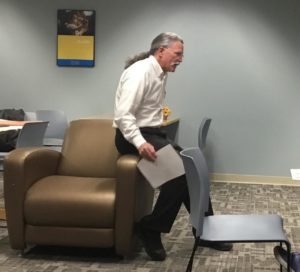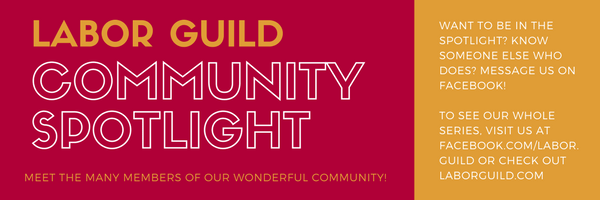Guild Community Spotlight: Tom Breslin
Throughout the month of August, we’ll be learning about one of the key ingredients that makes Guild School special: our faculty! Check out the blog each week for interviews with instructors and inside information about their Fall Term courses.
NEXT STEPS FOR STEWARDS
Taught by Tom Breslin
Main purpose of the class: Learn how engage members and organize in your workplace
Who should take it: Anyone who wants to understand what unions do, how they do it, and how members can build power
Course style: Engaging and question-based; strategy, centered on personal experience
How did you get involved with labor education?
Tom started getting involved in union leadership in the 1980s, when his union—for technical workers in hospitals in Minneapolis and St. Paul (the Twin Cities)—negotiated a multi-employer contract. Six months after the negotiation had supposedly been settled, there was still no paper contract. Tom wanted to know why, and that was the beginning of his involvement. He soon became business agent, a position which had not previously existed in that union.
Tom has many years of experience in labor education, which began with teaching junior and senior high school students about labor union history in the St. Paul Public Schools. He has also taught at the University of Minnesota as an adjunct faculty, and was Assistant Director of labor education at the Massachusetts Nurses Association (MNA). Tom had heard about the Guild for a number of years when Eileen Norton, Guild President and Director of Organizing at the MNA, asked him to teach a course.
How are you approaching this class?
“The issues that we talk about are common in every workplace. Times are difficult for unions. Employers are trying to extract more for less. Unions bring a sense of democracy to the workplace. This is a time when things have to change. Unions are being forced to be defensive, too many are reacting” rather than embarking on the important processes of strategic planning and goal setting.
Tom thinks it’s vital that members do a power analysis of their unions, and that union leadership analyze their own work to understand what they are doing and what they need to do to serve their members.
“If you have one goal, such as building the strength of the bargaining unit, then everything should be directed toward that goal. You have to ask, for example, ‘how do all of your meetings fit into this?’ and ‘what do you do with your minutes from month to month, what are you doing to move toward your goal?’ etc.”
What do you hope students get out of this class?
“The most important job of the steward is to organize the workplace. That’s why the steward is the most important role in the union hierarchy. Behavior has to be modeled in the workplace.”
Tom hopes that, emerging from this class, students will understand how to do an assessment of their bargaining unit, how to see themselves as organizers, and how to think more strategically about the work they’re doing. “The more people are involved in the decision-making process, the better the decision is going to be.”
What would you tell students who are thinking about taking this class?
“Quicker doesn’t mean better; to do things well takes time—you can’t just throw tomato seeds in the ground. If you want to build the power of the union, rather than just have a basic need met, you need to work at it.”
Join Our Mailing List
For Guild news, Labor School updates, Workshops, and CGA information.

